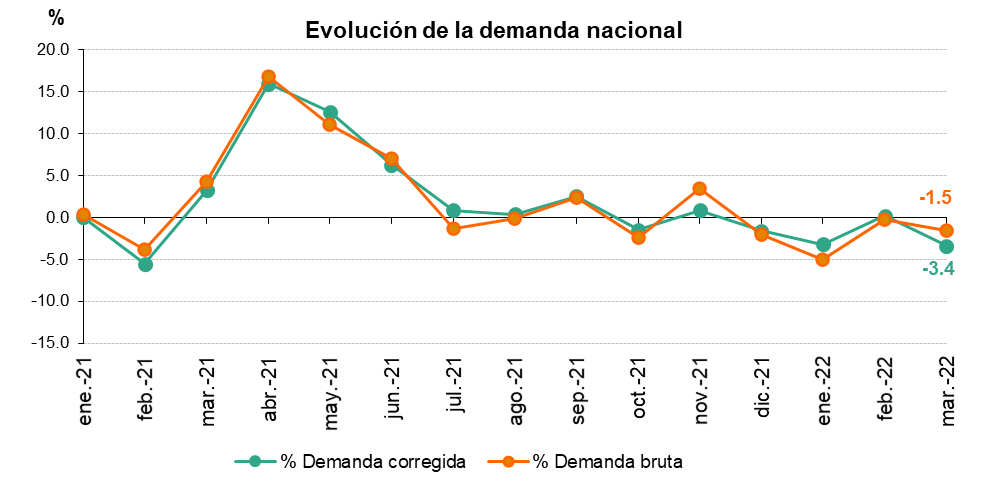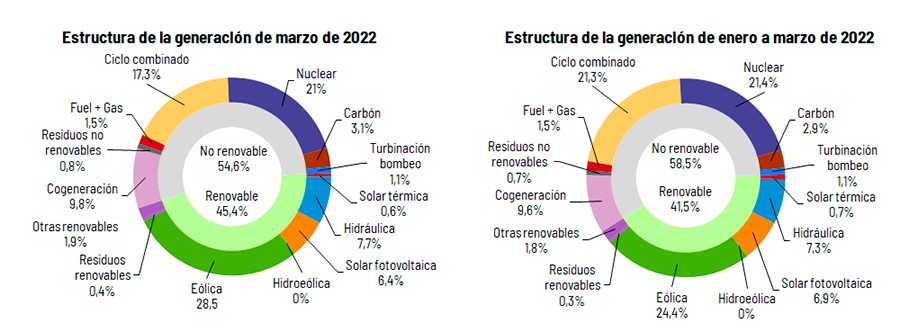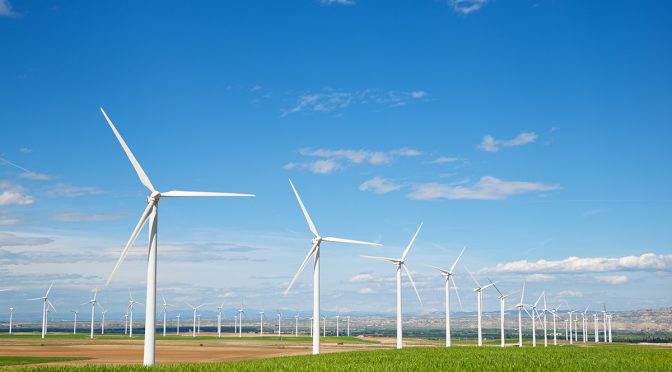The demand for electricity in Spain fell by 1.5% in March. Wind energy was the main generation technology with more than 28% in the national territory.
45.4% of the national generation this month was renewable and 67% was free of CO2 equivalent emissions. The demand for electricity increased by 7.6% in the Balearic Islands and 12.3% in the Canary Islands compared to March 2021.
The national electricity demand for the month of March is estimated at 21,487 GWh, 1.5% lower than that registered in the same month of 2021. If we take into account the effects of the calendar and temperatures, the national demand falls by 3.4 %.

In the first three months of 2022, the demand is estimated at 64,339 GWh, 2.4% less than in the same period of 2021. Once again, once the influence of the calendar and temperatures has been corrected, the demand is 2, 3% lower than that registered in the previous year.
In the month of March, and according to data estimated to date, generation from renewable energy sources represented 45.4% of production. 67% of electricity production came from technologies that do not emit CO2 equivalent.
For its part, the generation of wind power in March was 6,479 GWh, 15.6% higher than that of the same month of 2021, and accounted for 28.5% of the mix, which has placed it at the head of the electrical production of our country. Nuclear was positioned behind with 21%, and the combined cycle, which generated 17.3% of the total.
generation from renewable energy sources represented 45.4%.

The demand for electricity falls by 2.1% in the peninsular electricity system
In the peninsular electricity system, the demand for March is estimated at 20,292 GWh, 2.1% lower than that registered in 2021. Taking into account the effects of the calendar and temperatures, the demand decreases by 4%.
In the first three months of 2022, the demand for electricity on the Peninsula is estimated at 60,856 GWh, a
2.9% less than in 2021. In this case, once the influence of the calendar and temperatures have been corrected, the figure is 2.8% lower than that registered in the same period of the previous year.
During this month and according to estimated data to date, 47.1% of peninsular generation was of renewable origin and 70% came from technologies that do not emit CO2 equivalent. For its part, wind power registered 6,369 GWh and contributed 29.5% of electricity, being the first generation technology, ahead of nuclear power, which contributed 22.1% of the total. The combined cycle (with 15.3%), cogeneration (10.3%) and hydraulics (8.1%) complete the ranking of the five technologies that have generated the most this month.
The demand for electrical energy increases by 7.6% in the Balearic Islands and 12.3% in the Canary Islands in March
In the Balearic Islands, the demand for electrical energy in this month is estimated at 441,131 MWh, 7.6% higher than that registered in March 2021. If the effects of the calendar and temperatures are taken into account, the increase is by 4.8%% compared to the previous year. In the first three months of 2022, the Balearic gross demand is estimated at 1,302,680 MWh, 4.8% more than in the same period of 2021.
In terms of generation, the combined cycle, with 81.6% of the energy produced in the Balearic Islands, was the leading source in the archipelago in March. Thus, renewable energy without CO2 equivalent emissions generated in the Balearic community represents 5.9% of the total. In addition, during this month the submarine link between the Peninsula and Mallorca contributed to cover 6.8% of the Balearic electricity demand.
For its part, in the Canary archipelago, the demand for electrical energy is estimated at 719,028 MWh, 12.3% higher than that registered in February 2021. If the effects of the calendar and temperatures are taken into account, the demand increases 12.4% compared to the previous year.
In the first three months of 2022, the Canarian demand in gross terms is estimated at 2,081,747 MWh, 11.6% more than in 2021.
Regarding electricity generation in the Canary Islands, the combined cycle, with 42.5% of the total, was also the first source in the month of March. Thus, renewables and emission-free technologies represented 19% of production, with wind energy production being 29% higher than that of March 2021.


